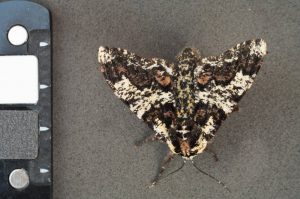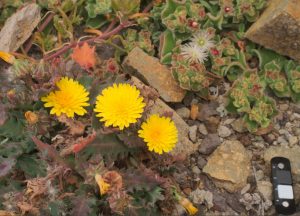At least one grey standard of known reflectance is required in each photograph (or in a separate photograph taken under exactly the same conditions and with identical camera settings).
Greyness and Diffuseness
The standards used should ideally have equal levels of spectral reflectance across the entire range the camera is sensitive to. e.g. a 40% standard should have 40% reflectance at all wavelengths from around 420-680nm for a standard human-visible camera. In practice this is never achieved, and we normally make an assumption that something is grey, even when it isn’t perfectly grey (e.g. even Spectralon grey standards vary by a few percentage points across their working range).
Standard diffuseness is also extremely important. While no standard is likely to have “perfect” Labertian reflectance, it’s important that standards are extremely diffuse, so that the angle of lighting and photography don’t affect the measured reflectance.

Postion of grey standards
The position and angle of the grey standards is critically important for objective measurements. The light falling on the standard should match as closely as possible the light falling on the object being measured with respect to angle relative to the light source, intensity, and colour (see lighting direction & diffuseness). If only one standard is being used then a value around 20 to 50% reflectance is appropriate for most natural objects, as a rule the ideal standard should have a reflectance near the upper range of your sample. For example, when measuring very dark objects a lower reflectance standard can be used (e.g. 2 to 10%). If you use a very light standard (e.g. 99%) to measure dark objects, then you will need to use a camera exposure value which is not optimal for the scene in order to ensure the white standard is not over-exposed. This increases the noise in estimates of low reflectance objects.

Multiple standards (e.g. white and dark grey) allow the software to overcome some optical glare (light bleeding onto the sensor), or photographing through reflective or hazy materials such as underwater, and through the surface of water (or through the side of a fish-tank). When photographing from the air into water the grey standards must be positioned next to the target (e.g. both standards underwater as close to the sample as possible), and the background sky or ceiling being reflected by the surface of the water must be uniform (e.g. this won’t give correct values if there are any visible ripples or if you can see blue sky and white clouds reflected in the water surface).
When measuring 2D objects the surface of the standard should be in the same plane as the target. For complex objects the standard should normally be angled relative to the light source (e.g. flat on the ground). Whatever rule is used must be kept constant throughout the experiment and between treatments.
Remember that light “spills” off nearby objects. Avoid photographing the grey standards near brightly coloured objects that you have introduced to the scene. This includes objects colourful in UV, many surfaces that look white to us absorb UV.
